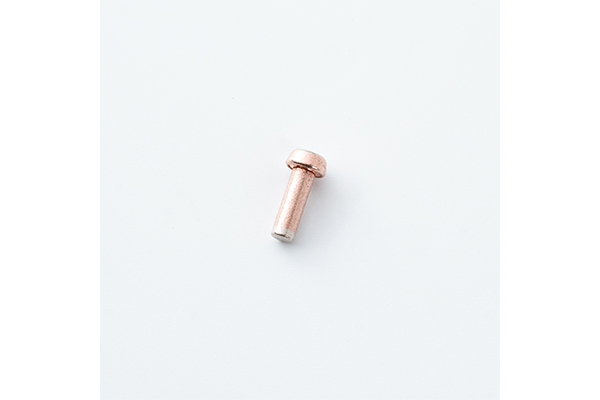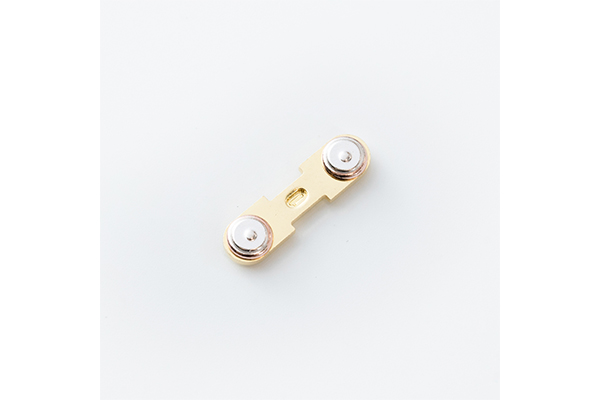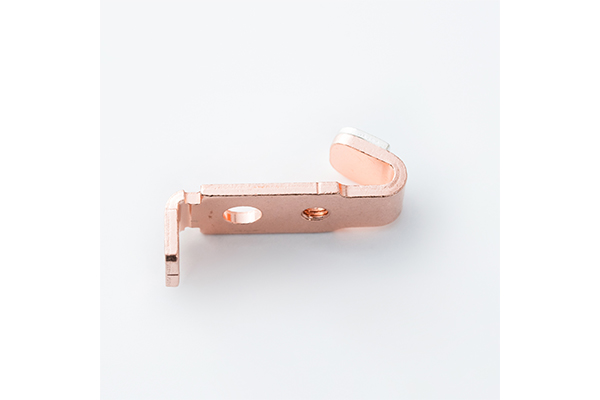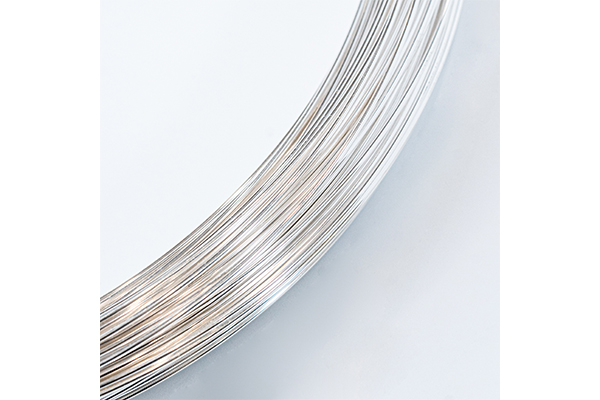How does the electrical contact material in riveting components affect its conductivity?
Release Time : 2025-07-01
As a key component in modern electrical equipment, riveting components are widely used in various control systems, such as circuit breakers, relays, military products, rocker switches and other high and low voltage electrical and electronic equipment. These integrated components not only integrate the advantages of electrical contact materials and conductive components, but also ensure the high performance and long life of the products through precise manufacturing processes, becoming an indispensable basic component in many industries.
Riveting components are composed of high-quality electrical contact layers and solid base layers. The electrical contact layer usually uses highly conductive materials such as silver, silver nickel, silver tin oxide or silver cadmium oxide. These materials have excellent conductivity and anti-oxidation ability. Even in long-term use, they can maintain stable contact resistance, reduce energy loss and improve the working efficiency of the equipment. The base layer is made of copper or brass, which provides a solid support structure for the entire component with its good mechanical strength and conductivity, ensuring that the electrical contact layer can work stably and is not easy to fall off or deform.
It is worth mentioning that riveting components have excellent anti-oxidation properties and can operate for a long time in harsh environments without rusting. This is due to the special surface treatment that forms a protective film, which effectively isolates oxygen and other corrosive substances in the air and prolongs the service life. At the same time, the smooth and burr-free surface design makes installation and maintenance simple and quick, reduces the inconvenience of operation or potential safety hazards caused by rough edges, and improves the user experience.
In practical applications, riveting components are widely used in various circuit breakers as core components for controlling the on and off of circuits. They can not only respond quickly to external commands and accurately perform opening and closing actions, but also withstand mechanical wear caused by frequent operations to ensure the reliability of the system. In addition, such components also play an important role in relays, rocker switches, and push button switches and panel switches in household appliances. The stable connection and fast response characteristics they provide are essential to improving the overall performance of the equipment.
For the military industry, due to its stringent requirements for components, riveting components stand out with their excellent durability and stability. Whether it is extreme climatic conditions or complex electromagnetic environments, they can ensure the normal operation of the equipment and meet the needs of national defense security. In the civilian market, especially in smart homes and automation systems, the compact and exquisite design and high-efficiency performance of such components make it one of the important factors in improving product competitiveness.
From the perspective of production technology, modern manufacturing technology and strict quality control system are the key to ensuring product quality. Advanced stamping technology combined with precise dimensional control ensures that each riveting component meets high-standard design specifications. At the same time, full-process quality inspection runs through all links of production, from raw material procurement to finished product delivery, and every level of inspection is carried out to prevent any defects that may affect performance.
Riveting components have become an indispensable part of modern electrical engineering with their unique material combination, excellent anti-oxidation performance, convenient use experience and wide range of applications. Whether it is industrial control, military equipment or electronic products in daily life, it is silently contributing its own strength to promote scientific and technological progress and social development.
Riveting components are composed of high-quality electrical contact layers and solid base layers. The electrical contact layer usually uses highly conductive materials such as silver, silver nickel, silver tin oxide or silver cadmium oxide. These materials have excellent conductivity and anti-oxidation ability. Even in long-term use, they can maintain stable contact resistance, reduce energy loss and improve the working efficiency of the equipment. The base layer is made of copper or brass, which provides a solid support structure for the entire component with its good mechanical strength and conductivity, ensuring that the electrical contact layer can work stably and is not easy to fall off or deform.
It is worth mentioning that riveting components have excellent anti-oxidation properties and can operate for a long time in harsh environments without rusting. This is due to the special surface treatment that forms a protective film, which effectively isolates oxygen and other corrosive substances in the air and prolongs the service life. At the same time, the smooth and burr-free surface design makes installation and maintenance simple and quick, reduces the inconvenience of operation or potential safety hazards caused by rough edges, and improves the user experience.
In practical applications, riveting components are widely used in various circuit breakers as core components for controlling the on and off of circuits. They can not only respond quickly to external commands and accurately perform opening and closing actions, but also withstand mechanical wear caused by frequent operations to ensure the reliability of the system. In addition, such components also play an important role in relays, rocker switches, and push button switches and panel switches in household appliances. The stable connection and fast response characteristics they provide are essential to improving the overall performance of the equipment.
For the military industry, due to its stringent requirements for components, riveting components stand out with their excellent durability and stability. Whether it is extreme climatic conditions or complex electromagnetic environments, they can ensure the normal operation of the equipment and meet the needs of national defense security. In the civilian market, especially in smart homes and automation systems, the compact and exquisite design and high-efficiency performance of such components make it one of the important factors in improving product competitiveness.
From the perspective of production technology, modern manufacturing technology and strict quality control system are the key to ensuring product quality. Advanced stamping technology combined with precise dimensional control ensures that each riveting component meets high-standard design specifications. At the same time, full-process quality inspection runs through all links of production, from raw material procurement to finished product delivery, and every level of inspection is carried out to prevent any defects that may affect performance.
Riveting components have become an indispensable part of modern electrical engineering with their unique material combination, excellent anti-oxidation performance, convenient use experience and wide range of applications. Whether it is industrial control, military equipment or electronic products in daily life, it is silently contributing its own strength to promote scientific and technological progress and social development.







